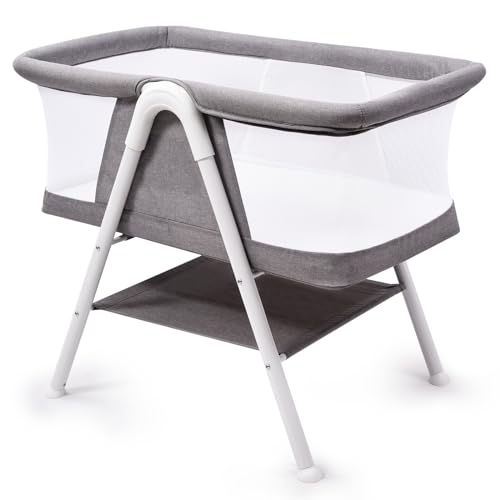Learn About Baby Cot To Bed While Working From Your Home
Transitioning from Baby Cot to Bed: A Comprehensive Guide for Parents
The journey from a baby cot to a bed marks a substantial milestone in a child's advancement. It signifies self-reliance and an action towards maturing. However, this shift can often be daunting for both parents and children. Understanding the process, the ideal timing, and how to make the shift smoother can significantly help in this journey. click hyperlink explores the important to consider when transitioning your kid from a cot to a bed, consisting of common FAQs, ideas, and a structured strategy to guarantee the process is as smooth as possible.
Why Transition from a Cot to a Bed?
Developmental Milestones
Transitioning to a bed is generally prompted by numerous aspects:
Physical Growth: As kids grow, they outgrow their cots. The typical size for a convertible cot is generally meant for babies as much as 3 or 4 years old.
Cognitive Development: As young children end up being more curious and mindful of their environments, they may attempt to climb out of their cots, positioning security risks.
Potty Training: Once a child is potty trained, they may require much easier access to the bathroom, which a bed can facilitate.
Brother or sisters: The arrival of a new brother or sister can likewise demand this transition, as the cot might need to be freed up.
When to Make the Transition
There is no one-size-fits-all answer to when a child must transition from a cot to a bed. However, here are some signs that it may be time:
- Climbing Out: If the kid is trying to climb up out often.
- Age Consideration: Many professionals suggest this shift around the age of 2 to 3 years, although every kid is special.
- Need for Independence: Children might reveal a desire for a big-kid bed.
Types of Beds Suitable for Toddlers
Not all beds are produced equal when it comes to young kids. Here's a breakdown of ideal bed types:
Bed Type
Description
Pros
Cons
Young child Bed
Smaller, lower to the ground, often with side rails.
Size-appropriate for young children; stability.
Minimal life-span as they grow out of rapidly.
Single Bed
Requirement size bed indicated for older kids.
Lasts longer; can be used for several years.
May be too big for a young child; threat of falling.
Convertible Crib
Crib that transforms into a young child bed.
Versatile; conserves cash in the long run.
Can be expensive; some may not use full-sized alternatives.
Loft Bed
Raised bed with space underneath for play or storage.
Takes full advantage of area; fun for kids.
Not ideal for really kids; security issues.
Actions to Transition Smoothly
Transitioning to a bed can be made much easier with mindful planning. Here's a detailed guide:
1. Prepare the Space
- Select a Location: Decide where the bed will be positioned.
- Childproof the Room: Since children are naturally curious, guarantee that furnishings is stable, sharp edges are covered, and dangerous products run out reach.
- Keep Familiar Items: Retain preferred toys and bed linen to use comfort in the brand-new environment.
2. Introduce the Bed
- Include Your Child: Let your kid help select their bed or bedding to develop excitement.
- Discuss the Transition: Make them understand that they are ending up being a huge kid by having a big-kid bed. Use motivating language.
3. Make the Swap
- Bedtime Routine: Keep the bedtime routine constant. This creates familiarity and comfort during the transition.
- Support: Offer them reassurance but avoid being overly protective; it's essential to motivate self-reliance.
4. Address Fears and Concerns
- Discuss Fears: Children may have fears of falling or the dark; talk about these openly.
- Strengthen Safety: Use guard rails on the bed at first and explain what to expect throughout the night.
5. Display and Adapt
- Be Patient: It may take some time for your kid to adjust totally.
- Stay Consistent: Maintain the nighttime regimen, even when difficulties emerge.
Frequently Asked Questions Regarding Transitioning from Cot to Bed
Q1: How long does the transition from a cot to a bed normally take?
A1: The shift can vary significantly among kids— ranging from a few days to a couple of weeks— as they change to oversleeping a new area.
Q2: Should I buy an unique toddler bed?
A2: Investing in a young child bed can make the transition easier given that they are developed with safety in mind; however, if you choose to go directly to a single bed, that can work too with the ideal security measures.
Q3: What if my child keeps rising?
A3: This is normal! Encourage them to remain in bed and establish favorable reinforcement by rewarding them for remaining in bed through the night.
Q4: Is it alright to shift to a big bed too early?
A4: Transitioning too early can cause sleep disturbances. It's important to examine the preparedness of the kid based upon their signs and advancement.
Transitioning from a baby cot to a bed is a significant step for both children and moms and dads. With thoughtful preparation and understanding of the kid's requirements, parents can make the shift smoother and more pleasurable. By acknowledging when to make the shift, comprehending the types of beds offered, and keeping a constant regimen, parents can alleviate worries and foster a sense of security for their youngster throughout this interesting new chapter. Ultimately, every child is various, and perseverance is essential in making this journey a positive experience.
